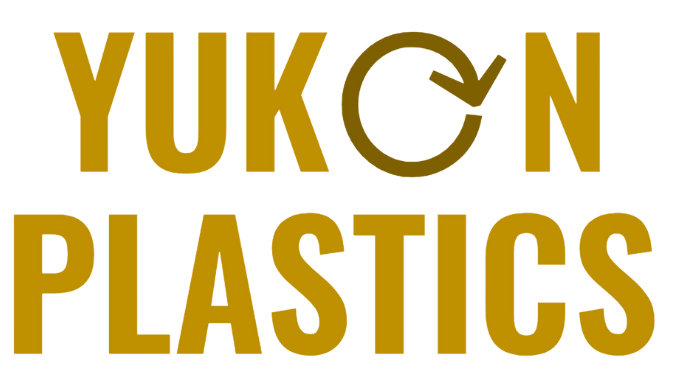One of our newest products is The Will Soap Dish. Its design allows a larger cake of soap rather than a bar of soap, requested by a number of people, including our friends at The Yukon Soap Company.
The inspiration for this soapdish is my son Will, and our hope we all have The Will to deal with plastic waste in a good way. We enjoy reimagining our relationship with plastic, while finding ways to infuse value into it locally.
Bears are a part of life in the Yukon, read on to learn about the soapdish collaboration between us and Mr. Bear.

What a backstory
This soapdish is made out of an unrepairable blue jug which was chewed on by a grizzly bear. Thank you to my friend and off-grid cabin dweller, Yukon polyvalent Artist Aurore Favier who brought it to Yukon Plastics.


Aurore shows off the bite marks in her water jug. Blue jugs are made out of HDPE, or High-Density Polyethylene. Check out the descriptions of the different types of plastic we use below.


Earlier this year Will and I took a trip to Stewart BC, which is about a twelve hour drive from Whitehorse, while there we stopped in at the local museum. It was here I took the picture of Will and a taxidermied grizzly https://www.stewartbcmuseum.com/.
Plastic types we use
Yukon Plastics uses type 2, 4 and 5 plastics: plastic items broken beyond repair and with an interesting story are our favourite. We love clean plastic with labels removed, especially interesting colours – gold is excellent and is found in some ice cream lids, oil cans like Castrol Edge and Draino.
HDPE (2): High-density polyethylene
HDPE: food and drink containers, as well as milk bottles, motor oil, shampoo bottles, soap bottles, detergents, bleaches, toys and bottle caps. Products of this plastic types are often easier to collect sorted and clean.
Properties: inert, thermally stable, tough and high tensile strength
Pros: cheap, high chemical resistance, electrical properties, waxy feel, good friction behaviour
Cons: less stiff than PP, easy to burn, poor UV resistance, high mold shrinkage
Safety: Good
Warning ⚠️ HDPE itself (when not burning) is not dangerous to use, however additives can be dangerous. It’s not possible to see what kind of additives are used in products.
Common uses: pipes, toys, bowls, crates, packing film
Best ways to use: HDPE works very similar to PP, low melting temperature and easy(ish) to mould. Great material to use!
LDPE (4): Low-density polyethylene
LDPE: plastic wrap, sandwich bags, squeezable bottles, and plastic grocery bags. Usually LDPE is not commonly recycled, as it is often not labeled, it’s too light and tends to be more difficult to clean, but works rather well with Precious Plastic techniques. A popular recycling technique for plastic bags is ironing them into a more durable textile.Properties: chemically inert, flexible, insulating
Pros: cheap, chemical and hydrolysis resistance, high impact strength (low temp), good processability
Cons: low tensile strength, low stiffness, low max temp, burns easily, poor UV resistance, high mold shrinkage
Safety: Good
Warning ⚠️ LDPE itself (when not burning) is not dangerous to use.
Common uses: bowls, lids, toys, containers, fim, squeeze bottles, pipes, bags, sheets
Best ways to use with PP machines: LDPE is often a foil and not ideal to shred. But its good to fuse together with iron or used to create marble.
PP (5): Polypropylene
PP is one of the most commonly available plastics on the market, it is strong and usually withstands higher temperatures. This material has a wide variety of uses but is consistently in products that get in contact with food and drink – tupperware, yoghurt boxes, syrup bottles etc. Properties:
Pros: like PE but stronger, stuffer and higher temp and lower density, mechanical, thermal and electrical performance result in a low cost engineering plastic
Cons: higher cost than PE, brittle below 0°C, high permeability to gases, poor resistance to fuels, poor UV resistance, keeps burning
Safety: Good
Warning ⚠️ PP itself (when not burning) is not dangerous to use.
Common uses: structural parts, pipes, toys, chairs, kitchenware, DVD cases, packaging, films, textile, carpets, rope, netting

